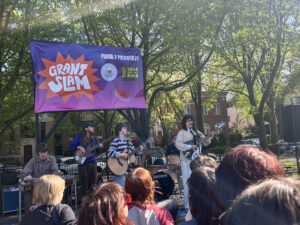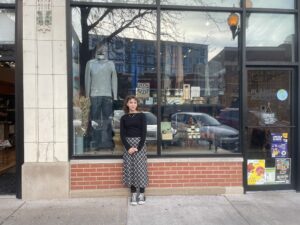For the 13 years Daniela Jimenez has lived in Joliet, Illinois, she describes the search for fresh food as limited, with options ranging from “really bad,” to the point where her family would end up not being able to purchase enough food for a healthy meal.
In Joliet, where full-service stores are scarce, many residents like Jimenez must settle for fast food.
The anticipated Tony’s Fresh Market, expected to open sometime this year, brings promise for residents living on the West Side but creates a greater divide for the East Side, which still struggles to provide fresh food options.
Courtney Barrowman, Joliet West High School teacher, teaches AP Human Geography, covering food deserts in class. Barrowman said a city in an urban area is classified as a food desert, where options for purchasing fresh food are limited and when 33% of its population lives more than a mile away from a full-service grocery store. For rural areas, it’s more than 10 miles.
Food deserts cause people to resort to buying fast food, which leads to high rates of heart disease within the U.S., Barrowman said.
According to Data USA, Joliet’s population is comprised of five large ethnic groups: white, non-Hispanic (49.1%); white, Hispanic (17.1%); Black or African American, non-Hispanic (16.7%); other, Hispanic (10.8%); and Asian, non-Hispanic (2.15%).
Stores often stray away from cities that have high crime rates and are economically lower, which causes the desert to become denser, Barrowman said. This leads to the issue of accessibility, she said.
As full-service stores become more distant from low-economic cities, Barrowman said it gets difficult for residents to travel, making it convenient and sometimes necessary to resort to nearby fast-food chains.
“If you do not have transportation to get to a store, it doesn’t matter how healthy you want to be,” Barrowman said. “When you cannot put the food in your refrigerator, it’s not going to happen, you’re not going to get healthier.”
In relation to Joliet, the food desert is most evident on the East Side in comparison to the West Side. According to the 2020 Will County Community Health Needs Assessment, Joliet residents of zip codes 60433 and 60432 experience a food desert.
The West Side is further progressing with the opening of the new grocery store, which will give its residents another option when shopping. An announcement on the Joliet website said Tony’s Fresh Market will occupy approximately 70,000 out of the 100,000 square feet of the building.
The Tony’s Fresh Market will be in the building that has become known as the vacant Kmart on West Jefferson Street.
Jimenez said she hopes the grocery store will have a positive impact on the West Side of Joliet.
However, the impact is not as evident for residents living on the East Side, where many struggle searching for fresh food.
The divide between the West and East Sides of Joliet began after what Joliet City Council member, Bettye Gavin called “the migration,” in which many residents began to leave Joliet. This caused crime rates to increase in the east.
On Joliet’s East Side, many residents do not have access to transportation to get to grocery stores. Gavin said many residents happen to be older and do not have cars, forcing many to rely on a Pace bus for transportation.
Gavin is also the executive director of the Forest Park Community Center, which offers a food pantry to Joliet residents.
Gavin said the food pantry has had an increase in activity since the start of the pandemic. The food is loaded into cars to avoid face-to-face contact.
“If we offered more choices, people would be more likely to make those choices,” Barrowman said. She said another solution to the lack of choices could be introducing community gardens, which would give people shared responsibility.
As for Joliet’s West Side, Jimenez said Tony’s will have a positive impact.
She said a step that should be made is to continue introducing stores that are “local, fresher, and more affordable.”














Be First to Comment